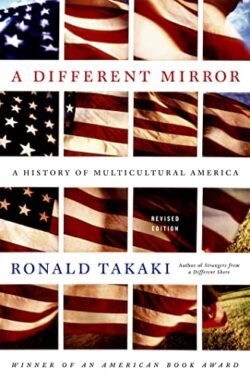“A Different Mirror: A History of Multicultural America” by Ronald Takaki is a landmark work that re-examines the history of the United States through the diverse experiences of minority groups. First published in 1993, Takaki’s book challenges the traditional narrative of American history, which often centers on the contributions and perspectives of European settlers and descendants. Instead, “A Different Mirror” highlights the stories of Native Americans, African Americans, Asian Americans, Latino Americans, and other marginalized groups, demonstrating how their contributions have shaped the nation. Through a multicultural lens, Takaki explores themes of immigration, labor, assimilation, and resistance, offering a more inclusive and complex view of American history.
Character Analysis
- As a historical analysis, "A Different Mirror" does not follow a narrative structure with characters but presents historical figures, communities, and their stories to illustrate the United States' diverse cultural landscape. Takaki himself serves as a guide, weaving together various threads of American history into a cohesive narrative that gives voice to those often excluded from mainstream historical accounts.
Themes and Analysis
- Diversity and Multiculturalism: The core theme of the book is the richness of America's multicultural heritage, arguing that the nation's identity is shaped by the interplay of various cultural influences.
- Racism and Discrimination: Takaki delves into the systemic racism and discrimination faced by minority groups throughout American history, analyzing its impact on shaping both individual lives and national policies.
- Resistance and Resilience: The book celebrates the resilience and resistance of marginalized communities, highlighting how they have fought for their rights and contributed to the ongoing struggle for equality and justice.
“A Different Mirror: A History of Multicultural America” by Ronald Takaki offers a vital reevaluation of American history, emphasizing the importance of understanding the nation’s past from multiple perspectives. Takaki’s comprehensive and empathetic approach uncovers the struggles and triumphs of America’s diverse populations, providing readers with a deeper appreciation of the complex tapestry that constitutes the United States. This seminal work is essential reading for anyone interested in American history, cultural studies, and the ongoing dialogue about diversity and inclusion in society. Takaki’s legacy continues to inspire a more inclusive approach to history, one that recognizes the contributions and experiences of all Americans.
If the summary caught your interest,
Consider reading the full book on AbeBooks.
Explore this book on AbeBooks
